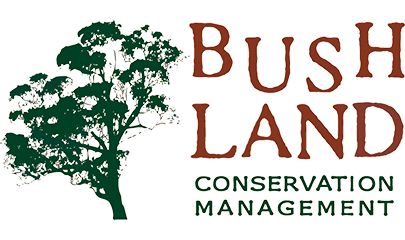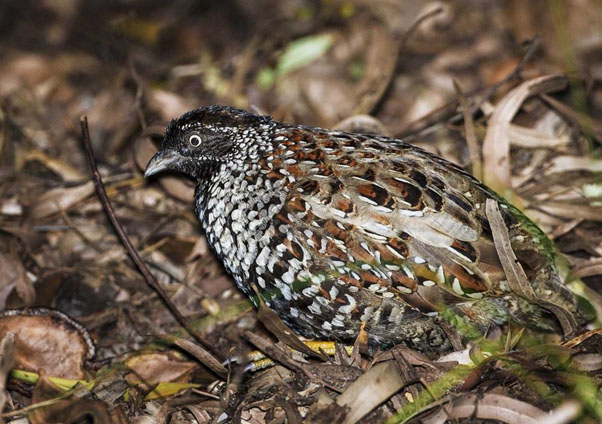Fauna Management
Black-breasted Button-quail
Common name:
Black-breasted button-quail
Scientific name:
Turnix melanogaster
Family:
Turicidae (button-quails)
Conservation status:
The black-breasted button-quail is listed as vulnerable in Queensland and endangered in New South Wales, if at all any current viable populations in NSW.
It is ranked as a critical priority under EHP.
Description/identification:
The black-breasted button-quail is a large, plump, pale-eye button-quail which ranges in size from 16cm-19cm in length. It has a grey bill and pale yellow legs. The plumage is of a brown, black, white and grey complexion. The chest is black with half-moon markings in white. The distinguishing feature between the male and female is that the male has a white face and throat while the female has black face and throat. The juvenile birds resemble the males but a slightly duller in the colouration. The voice of the female consists of booming and whistles. While the male makes rapid high-pitched notes, staccato calls and clucking.
Distribution:
It is thought that the Queensland range extends from the Byfield region north of Rockhampton to at least the border ranges in the south. The New South Wales populations are restricted to the Northern Rivers and Tableland regions. There appears to be 14 sub-populations in Queensland and of these there appears to be two main population centres, specifically in the semi-evergreen vine thickets of the Yarraman-Jimna region and coastal dune scrubs of the Great Sandy region.
Habitat:
The Black-breasted button-quail main vegetation communities are coastal scrub and fragments of vine thickets and forest that are periodically water stressed. They may also be located in woodlands, low thickets, acacia thickets, lantana patches in association with the listed vegetation types and hoop pine plantations and wetter subtropical rainforests in New South Wales.
Behaviour:
They are territorial birds, commonly seen in pairs or occasionally in small groups. They are elusive and well camouflaged and rely on stealth to avoid danger. Although they appear to transient in non-core habitats, they are generally considered to be non-migratory (sedentary)
The Black-breasted button-quail nest on the ground, with the breeding season mainly during October to December. Females are believed to be territorial during breeding season and will breed with several males. Multiple clutches (3-4) are produced in one season and are incubated and cared for solely by the male.
The diet of the Black-breasted button-quail consists mostly of small ground dwelling invertebrates such as spiders, ants, beetles, land snails and seeds. When foraging, the species creates distinctive shallow circular depressions (termed platelets) in leaf litter and loose soil, which range in size from 15-25cm in diameter. The birds scratch at the leaf litter with one leg while pivoting the body on the other, thus displacing leaves and soil, exposing invertebrate prey. Some other button-quail species feed in the same manner, including Painted button-quail (Turnix varius)
Population:
At present the population is thought to be around the 7500 figure, as a rough guide. With this species suspected to be in decline.
Reference:
Mathieson, M.T. and Smith, G.C. 2009. National recovery plan for the black-breasted button-quail Turnix melanogaster. Report to the Department of the Environment, Water, Heritage and the Arts, Canberra. Department of the Environment and Reserve Management, Brisbane.
The recovery of the Black-breasted Button-quail is a personal mission of ours, if you happen to see this bird or platlets please contact us with the location and or send through photos.


